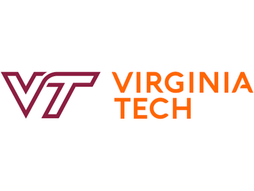SAIC's Summer Program (Early College Program Summer Institute) - Our Review
If you're a high schooler contemplating a career in design or architecture, then today’s blog post is just for you. Participating in summer programs like SAIC's Early College Program Summer Institute (ECPSI) can significantly enhance your college applications. These programs provide exposure to college-level coursework and help in building a standout portfolio. You also get exposure to industry-standard tools and techniques in a rich learning environment, further deepening your own skills and knowledge.
What is ECPSI?
ECPSI at the School of the Art Institute of Chicago (SAIC) is an interdisciplinary pre-college summer program designed for high schoolers aged 15-18. You'll explore the intricacies of art and design across various media, guided by expert instructors and artists. There are multiple sessions offered by SAIC, each featuring a unique mix of courses that span the spectrum of art and design, from street painting to animation to fashion design to architecture. Many of the courses offer college credits and can function as a stepping stone to building a competitive college portfolio.
SAIC itself is a century-and-a-half old institution renowned for its interdisciplinary approach, blending theory and practice. With access to both world-class resources as well as faculty, SAIC is a strong option to consider if you value building your creativity and innovation.
Who is eligible for ECPSI?
The eligibility criteria for ECPSI are minimal and straightforward. Simply put, you must be:
Aged 15-18.
Have completed your sophomore year in high school.
Have a passion for art and design.
How does the ECPSI application process work?
The ECPSI application process works as follows:
The registration opened on November 1, 2023. You are encouraged to browse the courses online and decide the one(s) you wish to apply for.
The priority deadline is March 1, 2024 and you’re encouraged to apply as early as possible, as seats are limited.
With respect to the application itself, you have a few options:
You can choose to apply for a merit based scholarship. This will require you to submit 6-10 pieces of your artwork, along with the initial non-refundable $100 deposit.
You can also choose to apply for need-based financial aid, which will require your family’s most recent federal tax form 1040, along with the initial non-refundable $100 deposit.
You can also choose to pay in full immediately.
Regardless of which option you choose, the payment deadline is May 1, 2024
How much does ECPSI cost?
The fee breakdown for the program is as follows:
1-week Session:
Tuition: $1,785
Housing and Meal Plan*: $600
Supplies: approximately $150
Incidentals/personal spending: approximately $100
2-week Sessions:
Tuition: $3,570
Housing and Meal Plan*: $1,200
Supplies: approximately $300
Incidentals/personal spending: approximately $200
4-week Session:
Tuition: $7,140
Housing and Meal Plan*: $2,400
Supplies: approximately $450
Incidentals/personal spending: approximately $350
How is ECPSI structured?
ECPSI hosts a total of five sessions across the summer:
Session 1: 2 weeks, June 17–28
Session 2: 2 weeks, July 1–12
Session 3: 2 weeks, July 15–26
Session 4: 4 weeks, July 1–26
Session 5: 1 week, July 29–August 2
Across these sessions they offer no fewer than a staggering 46 courses (!), each designed to cater to different interests and skill levels. While the complete list of courses is available here, we’ve listed a brief overview of some of the courses:
Alternative Comics and Graphic Novels - If you're intrigued by visual storytelling and the art of comics, this course is for you. It immerses you in the contemporary art forms of alternative comics and graphic novels. You'll explore various illustrative approaches, including writing, storyboarding, penciling, inking, coloring, and prepress preparations. The course offers a diverse exploration of materials like pencil, pen, ink, and collage. You'll learn research methods to develop ideas and produce conceptually-driven, portfolio-quality works. The projects will examine narrative structures, material choices, and the integration of text and image. You'll also be introduced to contemporary artists who transcend traditional comic approaches. The course includes regular critiques and field trips to enhance your studio experience. Note that previous drawing experience is required for this course.
3D Animation - For those fascinated by the world of digital animation, the "3D Animation" course is an excellent choice. This course delves into the versatile and fast-growing industry of 3D animation, used in everything from video games to movies. You'll learn to build three-dimensional spaces, audio, interactivity, life forms, and objects using Maya software. The course draws inspiration from renowned 3D artists and explores how 3D animation can be used in both traditional and non-traditional ways. Starting with introductory exercises, you'll focus on the skills necessary to complete individually-driven final projects. While previous experience with computers and digital imaging software is preferred, it's not mandatory. This course is a great opportunity to explore the possibilities of 3D modeling and animation.
Fashion Construction - If designing and constructing your own garments excites you, then "Fashion Construction" is the perfect course. This course teaches you how to design, construct, and sew garments, including pattern making. You'll start by developing original pattern blocks, explore pattern drafting and draping, and document your three-dimensional exploration through photography or drawing. Visits to SAIC's Fashion Resource Center and the Art Institute of Chicago will inspire your own concepts and designs. You'll work with a variety of materials to build conceptual and construction skills, culminating in the creation of a garment from start to finish. This course allows you to reflect and expand on your personal style while learning the skills needed for garment construction. Previous figure drawing and fashion design experience is beneficial but not required.
Is it prestigious?
ECPSI's selectivity and prestige are evident in its small cohort sizes (about 150 students per session) and a favorable student-to-instructor ratio of 1:8. This exclusivity ensures personalized attention and a depth of learning. SAIC itself is one of the country’s oldest and most reputed art institutions, ranked as the #1 Most Influential Art School by the National Arts Journalism program at Columbia University. Its alumni include art pioneers, sculptors, cartoonists, and bestselling authors. And the faculty who will be teaching and guiding you are the same instructors who teach the undergrad students at SAIC, and these students are also a part of the classes, providing you a further degree of exposure.
Considering pros and cons
Pros:
You will receive an intensive learning experience: Working in a small, concentrated batch with easy access to your instructor, you will be able to maximize your learning and your exposure.
There is a diverse curriculum on offer: The courses on offer cover a wide range of subjects, fostering broad skill development. You are free to specialize in one, or apply for more than one if you so choose and broaden your skill set.
You have access to a lot of resources: All ECPSI courses utilize SAIC's state-of-the-art facilities and studios, which you will get access to as well while working on projects as part of your course.
You can choose your level of commitment: Whether you have a fledgling interest in art and are interested in a week-long course, or are committed to seriously building your skills in a four-week course, it is completely up to you.
It will help you with portfolio development: You can utilize ECPSI to build a strong portfolio of your artwork or design work to strengthen your future college applications.
Cons:
The program is fairly selective: With only 150 students admitted per session from people applying across the country, securing a spot may be challenging.
It can be expensive: If you do not end up securing a merit or financial need scholarship, then the program can be costly at nearly $3000 for even the one week session.
Our review
In conclusion, ECPSI at SAIC is an excellent opportunity for aspiring artists and designers. The program's comprehensive curriculum, expert faculty, and access to top-tier resources make it an ideal choice for those looking to advance their skills and prepare for a future in the creative fields. If you're ready to commit to an intensive, enriching summer experience, ECPSI is definitely worth considering.
Lumiere Research Scholar Program
If you’re keen on pursuing research in art, art history, and literature that can build your profile further, you could also consider applying to one of the Lumiere Research Scholar Program, selective online high school programs for students I founded with researchers at Harvard and Oxford. Last year, we had over 4000 students apply for 500 spots in the program! You can find the application form here.
Stephen is one of the founders of Lumiere and a Harvard College graduate. He founded Lumiere as a PhD student at Harvard Business School. Lumiere is a selective research program where students work 1-1 with a research mentor to develop an independent research paper.
Image Source: SAIC logo










